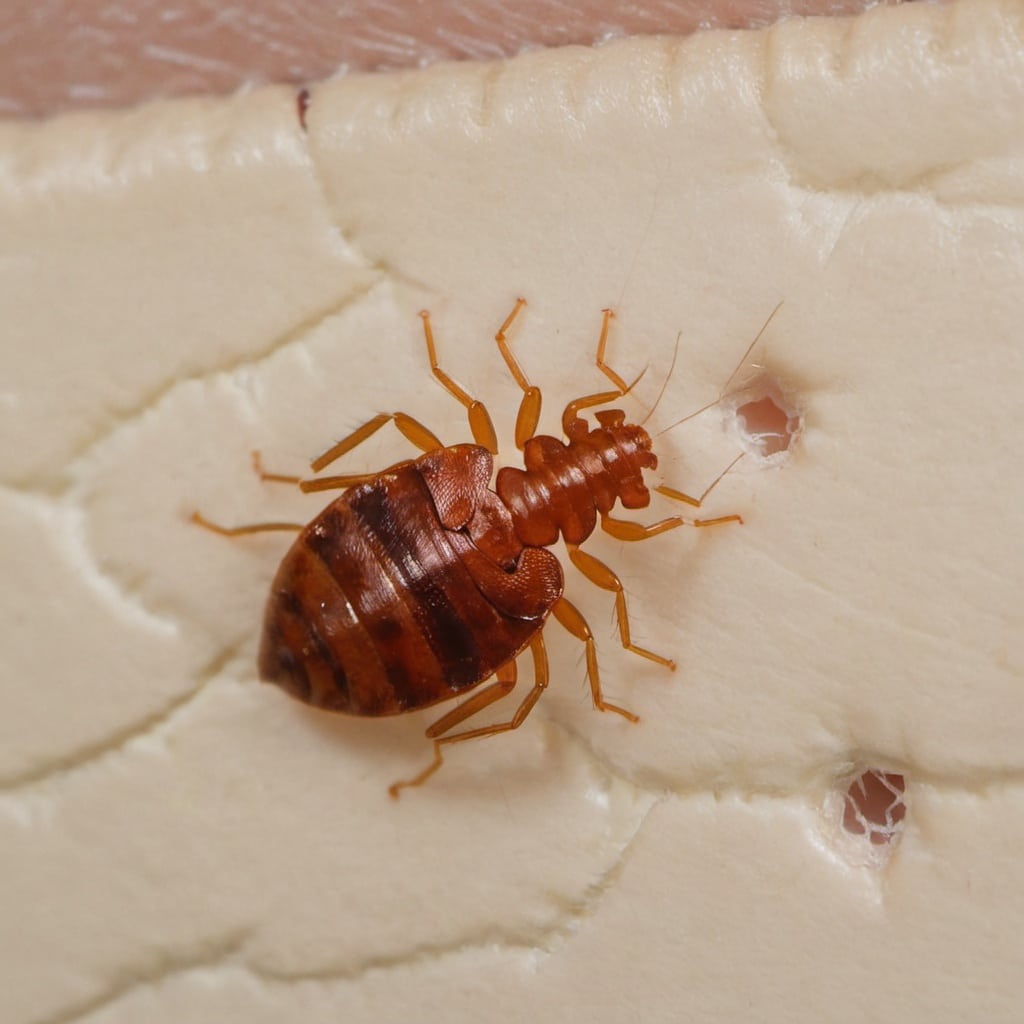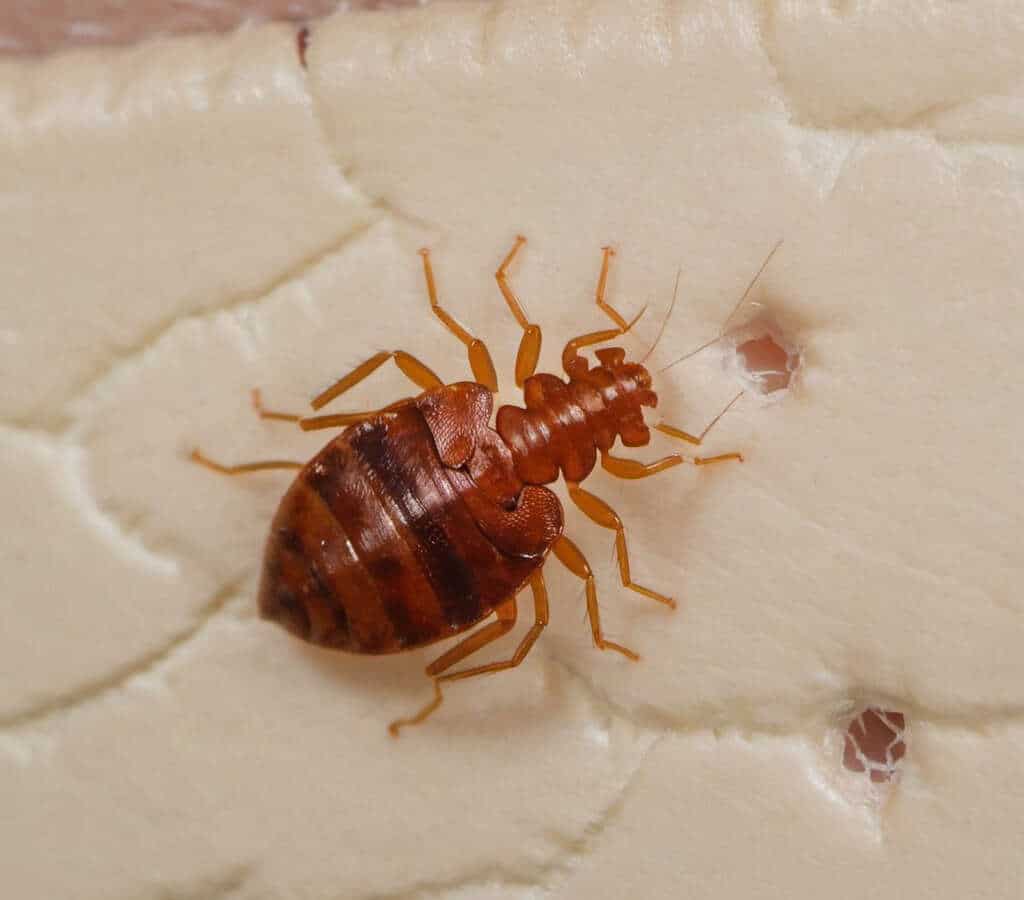I often have customers that suffer from bed bug bites. And in many of these cases, I will find that some people are bitten often, and some are not. A wife will suffer endless hours of scratching and the husband will sleep soundly, without a mark on him. This is a story that I’ve been told over and over again. So many of my customers ask, why do bed bugs only bite me? In most cases, bed bugs will bite everyone, but not everyone responds the same way. Some people have acute reactions to bites, some do not.
People often have different immune reactions to bed bug bites. Most people do not sense the actual bite when it happens. This is because of chemicals that numb the area around the bite are in the saliva of the bed bug. Most people will develop a small redish welt, much like a mosquito bite, where they were bitten. But some people don’t. And some people have larger reactions. Bed bugs also sense out their food source by heat and carbon dioxide. If a person emits less carbon dioxide, and runs a little cooler, bed bugs could be more attracted to another person.
BED BUGS AND STEALTH
Bed bugs rely on stealth to survive. They can move around three feet a minute, which is fairly quick for their size. But this is usually not fast enough to defend them. Also, when they eat, they engorge themselves, making them much larger and slower. To defend themselves in these situations, they will find a good hiding spot and stay put. Once they have fed, it can take days to digest their meal. They will stay still in one spot for as long as they can to do this. This also conserves energy.
But their hiding spots can also give them away. Dots on mattresses can give us tell tale signs of where they are. When a bed bug bites, a small amount of blood will usually fall on the bedding or mattress where they are. This red spot tells us where they are feeding. Then, as they sit and digest, they will deficate. You will often see large numbers of these black spots around the seams of mattresses. This is often where large numbers of them will congregate. Contact your Oklahoma exterminator for more information.
LIFECYCLE OF A BED BUG
Bed bugs go through an incomplete metamorphosis. They start as an egg. The mother does not care for her young. After the egg hatches, a small nymph will emerge. These nymphs look much like the adult versions, but only smaller. An insect with complete metamorphosis would emerge as a larva, then pupa, then adult. The nymph will feed and continue to grow until it outgrows its exoskeleton. At this point, it will molt, shedding its skin. The nymph will go through 5 molts in its lifetime before it becomes an adult.
Bed bugs are blood feeders. They require a blood meal at every stage of life. Moving from one stage of life to another requires a large amount of energy. So, before every molt, they will first take a blood meal. Before they lay eggs, they require a blood meal. If they can’t find one, they will sit still in one place until they can eat. A bed bug can last up to a full year without a meal before dying from starvation. It’s this resilience that makes them so persistent.
HOW INFESTATIONS CAN BE TRANSMITTED
Although these insects are fast for their size, covering large distances can present a problem for them. The way that they combat this is by hitching a ride off of a larger animal or person. Attaching to a pant leg or book bag can get a pregnant female into a new home or business to start a new infestation. This innovation gives them the ability to expand their reach exponentially. Children can carry them to school, patients can pass them off in hospitals, and hotel beds can be a hot bed for bed bug activity.
It’s important to be vigilant and check often for an unwelcome visitor. Traveling can be especially dangerous. Hotel beds, airplane seats and airport couches can all be safe havens for bed bugs. It’s important that you check your hotel bed before sitting, laying or putting luggage on them. College dorms and rehabilitation centers can also carry these insects. Be wary when you are away from home, and call a Tulsa exterminator if you think you have brought home a problem.
CAN BED BUG BITES MAKE ME SICK?
The good news is that, no, bed bugs can not make you sick. They do have piercing mouth parts that cut through the skin and drain blood. Bed bugs also inject a small amount of saliva to numb the area around the bite while eating. So how does the insect not transmit disease? The trick is in the way in which bed bugs bite. They pierce the skin and then start sucking blood. These bugs don’t stop sucking until after they have removed their mouth parts from the skin. The little bit of blood that leaks is what causes the red spots on the sheets. Your Tulsa pest control company can help.
Scientists have not been able to find any connection between bed bugs and any communicable disease. This is a very good thing, because bed bug infestations have been on the rise. In the 1940’s and 50’s, people overused pesticides such as DDT and almost wiped out bed bugs for good. After it was found that these pesticides were dangerous, and their use was discontinued or restricted, bed bugs started making a comeback.
HOW DO I GET RID OF THEM?
Treatment of bed bugs is a difficult situation. They attack us at our most vulnerable position, when we sleep. Most treatments include treating beds, where we also have the most skin to furniture contact. Because of this, great care must be taken when treating this issue. It’s important that you find a reputable Oklahoma pest control company to eliminate bed bugs from your home.
Here at TermMax Pest Control, we can help. We service the Tulsa area including Bixby, Owasso, Jenks, Sapulpa, Sand Springs, Pratville, Broken Arrow, Coweta, Catoosa and more. Contact us for a free estimate!



